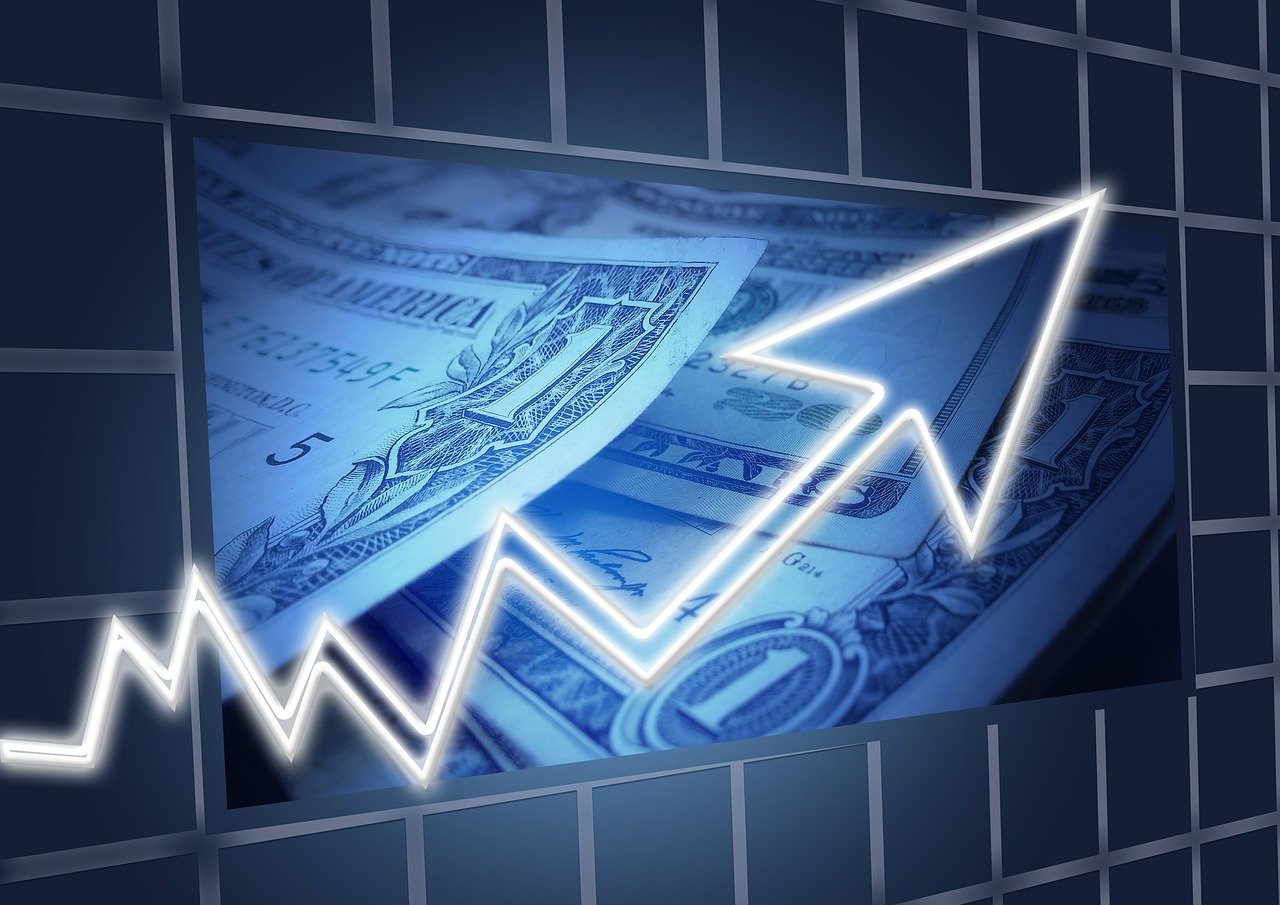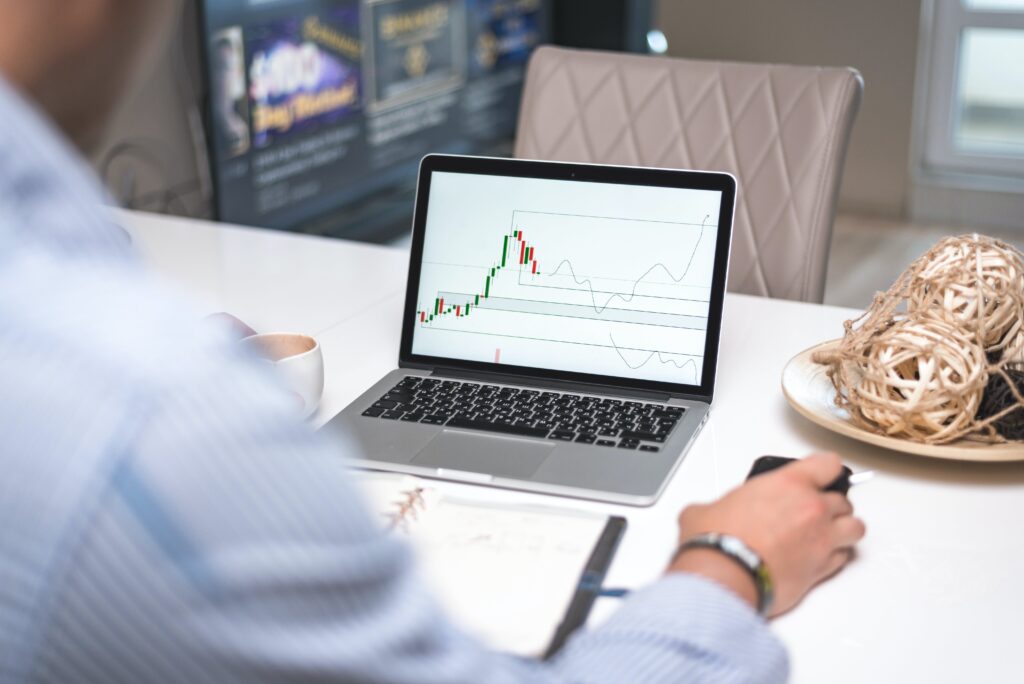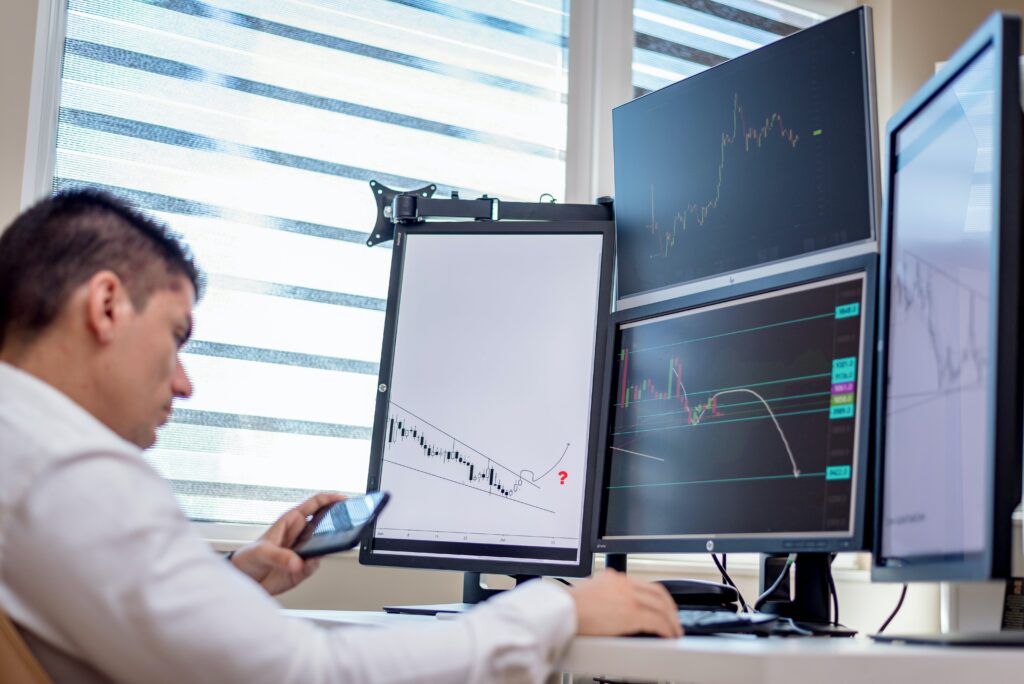
Forex trading is exciting and can be lucrative, but to make money as a Forex trader, you need to first understand the basic concepts, then plan your trading strategies based on different analysis techniques. In this article, you will learn how to trade Forex even if you are a beginner.
What is the FOREX market?
The Forex market, short for the foreign exchange market, is the largest financial market globally, where currencies are bought and sold.
There are many currencies and Forex trading centres in the world.
The major trading centres are London which is the key financial center, followed by New York, Tokyo, Singapore and Hong Kong.
In terms of currency pairs, the top 8 most traded currency pairs are:
1. US Dollar (USD)
2. Euro (EUR)
3. British Pound (GBP)
4. Japanese Yen (JPY)
5. Swiss Franc (CHF)
6. Canadian Dollar (CHF)
7. Australian Dollar (AUD)
8. New Zealand Dollar (NZD)
Unlike other financial markets, there is no central exchange for Forex. Instead, trading is conducted over-the-counter (OTC), meaning transactions occur directly between parties.
The primary players in the Forex market include banks, financial institutions, corporations, and individual traders (also known as retail traders) like yourself.
When to trade FOREX
The Forex market operates 24 hours a day, five days a week (from Sunday, 5 p.m. until Friday, 4 p.m. ET), making it highly accessible to traders worldwide.
Throughout the 24 hours, it is generally split into 3 major trading sessions:
i) Asian session – begins with the Sydney open (22:00 GMT) and ends with the Tokyo close (08:00 GMT)
ii) London session – 08:00 till 16:00 GMT
iii) New York session – 13:00hrs GMT till 21:00hrs GMT
The overlap between the London session (closing of London) and New York session (opening of New York) is the most volatile as it has the highest trading activity, given that many traders globally trade the London session and/or the New York session.
How to Trade Forex – Trading Basics

Learn the Basic Forex Trading Concepts
To embark on your Forex trading journey, you must first understand the basics. We will start with some basic concepts in this article first.
i) Currency pair
A currency pair is the foundation of Forex trading, representing the exchange rate between two currencies.
Each currency pair consists of a base currency and a quote currency.
The base currency is the first currency listed in the pair, representing the unit of value against which the exchange rate is quoted. The quote currency, on the other hand, is the second currency in the pair and indicates the amount of that currency needed to purchase one unit of the base currency.
For example, in the EUR/USD pair, the euro (EUR) is the base currency, and the U.S. dollar (USD) is the quote currency. An exchange rate of EUR/USD of 1.105 means that you need USD1.105 in order to purchase 1 unit of Euro.
ii) Pips
Pips, or percentage in points, are a crucial concept in Forex trading, measuring the smallest price movement in the exchange rate of a currency pair.
Typically, currency pairs are quoted with four decimal places, and the pip represents the fourth decimal place.
For most currency pairs, a pip is equivalent to 0.0001, except for pairs involving the Japanese yen, where it is typically 0.01 due to the lower value of the yen.
Understanding pips is essential for evaluating price fluctuations and determining the potential profit or loss in a trade.
For example, if the EUR/USD pair moves from 1.1200 to 1.1205, the change is five pips. In this scenario, if a trader bought the pair at 1.1200 and sold it at 1.1205, they would have gained five pips. Conversely, if they had sold at 1.1200 and bought back at 1.1205, they would have incurred a loss of five pips.
iii) Leverage and margin trading
Leverage is a tool that allows traders to control a larger position size with a relatively smaller amount of capital. It magnifies both gains and losses, offering the potential for higher profits but also increasing the risk.
For instance, if a trader uses 50:1 leverage, they can control a position worth $50,000 with just $1,000 of their own capital.
However, while leverage can magnify profits, it’s crucial to note that it can also lead to substantial losses if the market moves unfavourably.
Margin is the amount of money required to open and maintain a leveraged position. It is a security deposit ensuring that traders have sufficient funds to cover potential losses.
For example, if a trader wants to open a position of $100,000 with 1% margin, they would need $1,000 in their account.
Proper risk management is essential when using leverage and margin, as it significantly impacts the overall dynamics of Forex trading.
How to Develop a Forex Trading Strategy

In order to be a good Forex trader, you need to understand both fundamental analysis and technical analysis.
a) Fundamental analysis for Forex trading
Fundamental analysis is a crucial aspect of Forex trading, providing traders with insights into the intrinsic value of a currency and the factors influencing its price movements.
Unlike technical analysis, which relies on historical price data and chart patterns, fundamental analysis involves examining economic, political, and social factors that can impact a country’s currency.
One of the primary elements of fundamental analysis in Forex trading is economic indicators. These indicators include key metrics such as GDP growth, employment rates, inflation, and interest rates.
Traders closely monitor these indicators as they reflect the overall health and stability of a country’s economy. For example, if a country’s GDP is growing, it may attract foreign investment, strengthening its currency.
Central bank policies and decisions also play a pivotal role in fundamental analysis.
Interest rate decisions, monetary policy statements, and quantitative easing measures by central banks can significantly influence currency values.
Traders pay close attention to statements from central bank officials, as any hints about future policy changes can impact currency markets. In general, higher interest rates tend to cause a nation’s currency to appreciate relative to others, while the opposite is true if the central bank lowers interest rates by more than what the market expects.
Political stability and geopolitical events are additional factors that one should take into account in fundamental analysis. Political unrest or uncertainty can lead to currency depreciation as investors pull their money away from high-risk countries, while stable political conditions often support a stronger currency due to greater investor confidence.
Furthermore, trade balances and economic relationships between countries are essential in assessing the strength of a currency. A country with a trade surplus (exports exceeding imports) typically experiences an appreciation of its currency.
b) Technical analysis for Forex trading
Technical analysis is a technique that Forex traders employ to evaluate and forecast future price movements based on historical market data.
This approach focuses on analysing charts, patterns, and various technical indicators to identify trends, entry and exit points, and potential support and resistance levels. While it doesn’t predict future events, technical analysis helps traders assess probabilities and develop strategies based on historical price behavior.
Candlestick patterns provide visual representations of price movements. Patterns like doji, hammer, and shooting star are interpreted to understand market sentiment and potential changes in direction.
Chart patterns consist of groups of candlesticks – their formation is a signal that indicates whether the market is likely to continue its current trend or reverse. Popular chart patterns are double top, double bottom, head and shoulders and more.
Technical indicators provide additional insights into market conditions which can help you to gauge the direction as well as strength of a trend and much more. Traders use technical indicators to confirm trend direction, identify overbought or oversold conditions, and generate trading signals. Popular indicators include moving averages, relative strength index, bollinger bands and more.
Technical indicators can be lagging, coincident or forward. Choosing the right mix of lagging, coincident, and forward indicators depends on a trader’s strategy, risk tolerance, and market conditions. Some traders prefer a combination of indicators to receive well-rounded signals, while others may focus on a specific type based on their trading style.
By analysing candlestick patterns, chart patterns, technical indicators and key price levels within a chart, you can form a trading strategy to buy or sell an asset.
How to Start Trading Forex?
Trading Contracts for Differences (CFDS)
Why trade using CFDS?
CFDs are derivative products that allow investors to speculate on the rising or falling prices of assets such as currencies, commodities like gold and crude oil, stocks, indices, and even cryptocurrencies. With CFDs, you can easily access and trade many different types of assets across financial markets even as a retail trade, which provide you with a lot of trading opportunities.
Unlike traditional investing, CFD trading does not involve ownership of the underlying asset. Instead, traders enter into contracts with a broker based on the asset’s price movements. This flexibility allows traders to take both long (buy) and short (sell) positions, capitalizing on market trends regardless of whether prices are rising or falling, instead of just trading in one direction.
Another key advantage of trading CFDs is the ability to leverage, enabling traders to control larger positions with a smaller amount of capital.
Which Platform can I Trade FOREX?
I am using Weltrade, an international CFD broker that is licensed by the Cyprus Securities and Exchange Commission.
Why I like to trade with Weltrade
✅ User-friendly platform, licensed and regulated
✅ Many assets available – Forex, Commodities, Stock indices, Cryptocurrencies
✅ Fast and easy deposit & withdrawals (withdraw money as fast as 1 day!)
✅ Can deposit with credit card, can withdraw into local bank account (for Malaysians)
✅ Reliable customer support
✅ Many attractive bonuses with frequent campaigns (check out the latest ones in their website!)
Register for a Weltrade account: https://my.weltrade.com/?r1=ipartner&r2=56684
Bonus:
Get 100% signup bonus for your initial deposit if you sign up with the link above!
This means that if you deposit $1,000, Weltrade will match it with an extra $1,000 tradable funds in your account.
Psst… The bonus goes up to as high as $10,000! So start trading now and grow your account!
Learn to Trade Forex using Technical Analysis
If you want to improve your technical analysis skills to analyse charts better and trade
using price action techniques, check out The Trader’s Guide: Profit from Price Action ebook:

Summary
In summary, the Forex market is dynamic thus staying informed about market developments is crucial for success.
Stay updated on economic indicators and news releases, set up a trading plan based on fundamental analysis and technical analysis alongside proper risk management, and adapt your trading strategy to evolving market conditions.
Becoming a proficient Forex trader requires a commitment to ongoing education and improvement, so don’t stop learning and improving! I will share more useful articles in this website, including trading strategies and risk management, so stay tuned!
If you have any questions or want to connect:
i) send an email to: [email protected]; or
ii) send a message via: https://bit.ly/contact-TFF